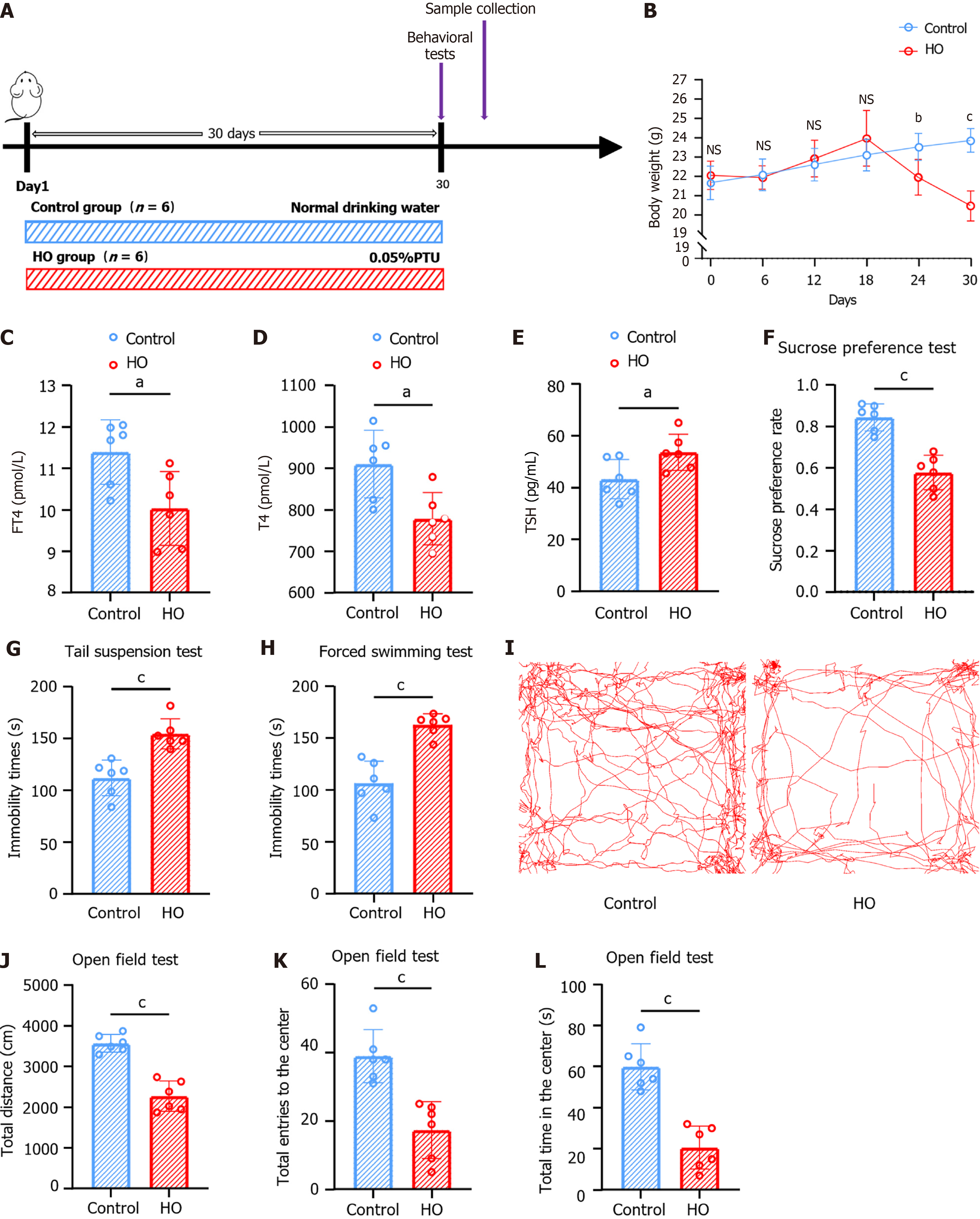Copyright
©The Author(s) 2025.
World J Psychiatry. Jul 19, 2025; 15(7): 104921
Published online Jul 19, 2025. doi: 10.5498/wjp.v15.i7.104921
Published online Jul 19, 2025. doi: 10.5498/wjp.v15.i7.104921
Figure 1 Mice with hypothyroidism exhibit depression-like behaviors.
A: Experimental setup: Mice were divided into control and hypothyroid groups (HO), with the HO group receiving propylthiouracil in their drinking water for 30 days; B: Body weight significantly decreased in the HO group over time; C-E: Hormonal analysis reveals reduced levels of free thyroxine and total thyroxine, and increased thyroid-stimulating hormone in the HO group, confirming hypothyroidism; F: The sucrose preference test shows a reduced preference in the HO group, suggesting anhedonia; G and H: The tail suspension and forced swimming tests indicate increased immobility times in the HO group, reflecting depressive-like behavior; I: Movement paths in the open field test demonstrate reduced activity in the HO group; J-L: The open field test results show decreased total distance traveled, fewer entries into the center, and less time spent in the center for the HO group, indicating anxiety-like behavior. Results are depicted as mean ± SEM. aP < 0.05, bP < 0.01, cP < 0.001 indicate statistical significance. HO: Hypothyroid group; PTU: Propylthiouracil; T4: Thyroxine; FT4: Free thyroxine; TSH: Thyroid-stimulating hormone.
- Citation: Guo HJ, Ma XQ, Li YT, Zhou ZH, Tao W, Jiang YH, Li XL, Zhang XL. Correlation between depressive-like behavior and gut microbiota in mice with hypothyroidism. World J Psychiatry 2025; 15(7): 104921
- URL: https://www.wjgnet.com/2220-3206/full/v15/i7/104921.htm
- DOI: https://dx.doi.org/10.5498/wjp.v15.i7.104921









